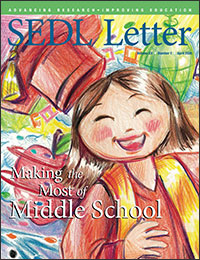Motivating Middle School Students to Attend Afterschool Programs
At an afterschool program at Duke University in Durham, North Carolina, middle school students experiment with combining their movements with an artist’s images and a rapper’s music. The project, MiX TAPEStry, is part of an effort to engage middle school students in science and technology by incorporating those subjects into an interest of the students, hip hop music.
“The point is not only to show them cool stuff, but to show them that it isn’t rocket science. The fact that we’re using webcams makes it very accessible,” said Rachel Brady, Duke research scientist and director of the visualization technology group. 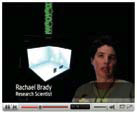 Afterschool programs across the country face a unique challenge when it comes to middle school students. These students aren’t as easily engaged as younger ones, and they often are less disciplined. In order to ensure participation and success, afterschool programs must find activities that appeal to these students while acknowledging their new and unique developmental needs. Activities such as cooking, filmmaking, photography, Web page design, music, dance, drama, team sports, and fashion design allow teachable moments in math, reading, technology, and science as well as in character education and team building.
Afterschool programs across the country face a unique challenge when it comes to middle school students. These students aren’t as easily engaged as younger ones, and they often are less disciplined. In order to ensure participation and success, afterschool programs must find activities that appeal to these students while acknowledging their new and unique developmental needs. Activities such as cooking, filmmaking, photography, Web page design, music, dance, drama, team sports, and fashion design allow teachable moments in math, reading, technology, and science as well as in character education and team building.
If You Teach It, They Will Come
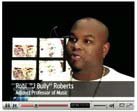
At Duke, students spend their time in a windowless black studio equipped with computer monitors situated along the walls and sensors wired to the ceiling. The sensors capture motion and channel it through the computers to trigger sounds. The result is a room students can “play” like a musical instrument—just by moving around. Hip hop recording artist Robi Roberts, who teaches in Duke’s music department, contributed an original rap called “Lemonade.” Roberts, whom the students know as “J Bully,” said he is excited about the mixing of hip hop and science.
“If these kids can find an interest in science, if it gets them interested in the practical applications, then great,” he said. “I have a solid, applied understanding of these things, but if I had gone to school for it, I would be that much better at everything that I do.”
The activity manages to connect science and technology to students’ real-world experience in a way that excites the students. Students participating in MiX TAPEStry have a personal connection to the interactive, networked performance of music and graphics. At a time of their lives when students are learning about themselves as much as about any subject in school, such personal connections can help afterschool programs attract and retain middle school students.
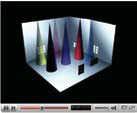
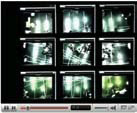
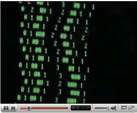
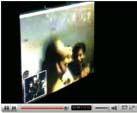
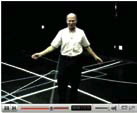
The computers at Duke University take data registering the amount of motion from the cameras and map it onto musical sound.
The potential impact of middle school afterschool programs goes far beyond the recognized benefit of providing safe, supervised environments in the hours after school. In addition to facing more demanding academics, middle school students are dealing with the challenge of meeting social and developmental benchmarks as they transition from elementary to middle and middle to high school. Afterschool programs can provide an avenue for helping those students successfully navigate these challenges while building skills necessary for academic success, learning to get along with others, and fostering positive attitudes toward community and school. Of course, the first step is getting students involved with afterschool programs.
“Participation matters,” says Priscilla Little of the Harvard Family Research Project, who serves on the steering committee of SEDL’s National Partnership for Quality Afterschool Learning, “but participation is lower than what we would like.” The next generation of studies, she says, rather than continuing to focus on outcomes, will examine program quality (i.e., “What works well for which kids under which circumstances?” “Who is—and is not—participating?”).

Little identifies three stages of middle school student motivation to attend afterschool programs: (1) amotivation (extrinsic motivation), (2) personal connection, and (3) intrinsic motivation. In the first stage, amotivation, students enter the program for extrinsic reasons such as family pressure, fulfilling a service requirement, having friends in the program, and so on. Peer relationships are typically a priority among middle school students. In some cases, this can benefit afterschool programs in the form of word-of-mouth advertising and positive peer pressure. Friends in the program present a potentially strong influence on a middle school student’s initial decision to join an afterschool program.
A personal connection is formed in the second stage when students find a link between the program’s mission and what matters to them. Unlike younger students, middle school students are able to “vote with their feet.” If afterschool programming bores students or doesn’t meet their needs, participation—and therefore success—is unlikely. Afterschool programs with activities based on youth choice and voice, culture, individual needs, multiple intelligences, and personal engagement are usually the ones that keep students engaged and coming back for more.

Finally, intrinsic motivation occurs when students become interested in and enjoy the program and its activities. Participants in the TeenzArt Fashion Forward program in Tucson, Arizona, for example, learn about the principles of fashion design, including the properties of colors and seasonal fashion trends. Students receive sketchbooks and portfolios, and discuss fashion concepts such as layering, accessories, and when to wear certain fabrics. The class also supports mathematics and gives students a foundation in case they want to pursue a career in fashion design. Students are offered as much guidance as they need but are encouraged to be self-directed and to take ownership of their projects. This practice strongly supports intrinsic motivation and an interest in and enjoyment of the program.
Creating a Quality Afterschool Program
According to the Harvard Family Research Project, program quality is the pivotal issue around which all other factors, including recruitment, participation, and retention, revolve (Little, 2006). Without a quality program, efforts to recruit and retain middle school students can be futile. Quality afterschool programs for middle school youth often focus attention on students’ psychological development and support an age-appropriate sense of independence. Negative outcomes are more likely when students perceive that their educational experiences are artificial, remote, alienating, and unrelated to their life experiences. Middle school afterschool programs should include opportunities to link school learning with real-world experiences and peer associations.
For example, the GEAR UP (Gaining Early Awareness and Readiness for Undergraduate Programs) afterschool program was created by the U.S. Department of Education to provide emotional, academic, and social support for students on the brink of falling behind. At GEAR UP sites, public school students are matched with students from institutions of higher education for intensive mentoring and tutoring.
Donna Schnorr, an associate professor at California State University, San Bernadino, and project director for GEAR UP Inland Empire, said that the program’s results have been astounding. Academically, GEAR UP students are more likely to have good attendance and to take college entrance exams and are less likely to be suspended, she said. Developmentally and socially, students who struggle with difficult home lives get immediate help at schools where counseling interns work. “These problems, which happen at any school, range from having been sexually molested to seeing someone shot,” Schnorr said.
The program is divided into two blocks: reading and math. Students engage in such activities as writing sentences using selected vocabulary words, creating fictional stories, writing checks, and balancing a checkbook. The program also features sessions where the university students talk to their middle school counterparts about preparing for college. GEAR UP has been successful because the program is designed to build positive relationships between the college student leaders and middle school students with activities that relate to future decisions and life experiences of individual students.
Quality programs also acknowledge that middle school students are beginning to show more autonomy in their lives. Middle school youth need to be given opportunities to make decisions, take on leadership roles, help construct program offerings, set personal goals, and develop their potential as role models (Lauver & Little, 2005). For example, programs in Tampa, Florida, and Coatesville, Pennsylvania, introduced cooking classes after students demonstrated an interest in cooking and nutrition. The program in Tampa showed a 25% increase in regular student attendance after the new afterschool classes began, and the Coatesville program discovered an avenue to increase family involvement as well as student participation when cooking activities evolved into events such as preparing meals with families. Both of these programs began with an informal student poll or brief questionnaire regarding the types of activities students would like to see in the afterschool program.
The Afterschool Training Toolkit
SEDL offers a free online resource, the Afterschool Training Toolkit, to educators and afterschool practitioners. This toolkit is designed to give afterschool program directors and instructors the resources they need to build fun, innovative, and academically enriching activities that not only engage students, but also extend their knowledge in new ways and increase academic achievement. It is broken down into six subject areas: literacy, math, science, the arts, technology, and homework help. Each subject area features helpful hints and ideas for staff development as well as project-based learning activities.
View the toolkit at www.sedl.org/afterschool/toolkits for more ideas.
Students may even seek leadership roles within activities. Hearing students’ voices and implementing their ideas helps students make personal connections to the program. Afterschool programs that pay particular attention to hiring, training, orienting, supporting, and evaluating staff based on their relationships with youth, not just on their administrative or supervisory capacity, are most successful with recruitment and retention.
Gail Pippen, program director at the Coatesville afterschool site, reported that student and family participation increased dramatically after students became directly responsible for planning their own programming and family events. “[Students] met to plan the event and worked with the staff to tell them what support they needed,” she said. “They wanted to look good.”
Afterschool stakeholders nationwide agree that programming can be a challenge for middle school students, who are too old for traditional daycare but too young to be left to their own devices after school. A 2005 summit cosponsored by the Nellie Mae Education Foundation, the Harvard Family Research Project, and the National Institute for Out-of-School Time revealed that while there is general agreement on key areas of program quality (e.g., health and safety, administrative practices, human relationships), there is wide variation in how national, state, and local organizations have articulated standards for middle school afterschool programming and indicators used to track progress. Nonetheless, afterschool programs that provide engaging activities directed at learning and improving school achievement attract more interest than programs that lack either fun or direction. Students will be more likely to attend regularly if they are engaged in learning activities designed around their interests and connected to their real lives. By providing opportunities to learn through experience in real-world contexts as well as to develop personal responsibility, self-direction, and leadership skills, afterschool programs can help middle school students prepare for their future, academically and otherwise.
References
- Butty, J. L., LaPoint, V., Thomas, V. G., & Thompson, D. (2001). The changing face of after school programs: Advocating talent development for urban middle and high school students. NASSP Bulletin, 85(626), 22–35.
- de Kanter, A. (2001). After-school programs for adolescents. NASSP Bulletin, 85(626), 12–21.
- Huang, D. (2001). An after school evaluation system for middle and high school program. NASSP Bulletin, 85(626), 45–62.
- Jacobson, L. (2003, February 12). Study critiques federal after school program. Education Week, 22(22), 10.
- Lauver, S., & Little, P. M. D. (2005). Finding the right hook: Strategies for attracting and sustaining participation in after school programs. School Administrator, 62, 27–31.
- Little, P. M. D. (2006). Exploring quality in after school programs for middle school-age youth. Cambridge, MA: Harvard Family Research Project.
- Middle school students GEARing UP for after school tutoring. (2007, November 13). The Chattanoogan. Retrieved December 3, 2007, from http://www.chattanoogan.com
- Olson, L., Gewertz, C., & Lloyd, S. C. (2006, June 6). Opening doors. Education Week, 25(41S), 23–31.
- Pfeiffenberger, S. (2006, October 12). Hip hop inspires kids’ interest in science. Retrieved December 3, 2007, from http://www.dukenews.duke.edu/2006/10/mix.html
- Westmoreland, H., & Little, P. M. D. (2006). Exploring quality standards for middle school after school programs: What we know and what we need to know. Cambridge, MA: Harvard Family Research Project.
- Younger, J. (2007, November 20). Students try fashion design. Arizona Daily Star, p. B5. Retrieved December 3, 2007, from http://www.azstarnet.com
Wendy Jones is a SEDL program assistant with SEDL’s National Partnership for Quality Afterschool Learning. Prior to joining SEDL, Wendy was a 21st Century Community Learning Center program director for Hillsborough County Public Schools in Tampa, Florida.
Next Article: Former SEDL Employees Release New Book About Leading Professional Learning Communities
